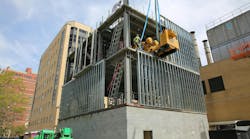Planning and scheduling have many advantages, and even the lower-end CMMS products greatly facilitate these functions. A good CMMS creates schedules based on various data you enter, such as the frequency, duration, and start date of individual maintenance tasks. The schedules can typically be adjusted to match existing resources.
Yet in many facilities that have a CMMS, this basic strength of a CMMS isn’t utilized. Instead, a supervisor prints out batches of work orders and tacks the printouts to a corkboard or puts them in an “Active” bin. The idea is maintenance techs will work the active work orders so you save time by not having to actually assign the work.
One consequence is that low-priority work often gets done ahead of higher-priority work. Or the printout for an undesirable task sits in the bin “forever” or just disappears off the corkboard. Or a tech takes a paper and then leaves it somewhere, so that job doesn’t get done until it’s printed out again next quarter.



